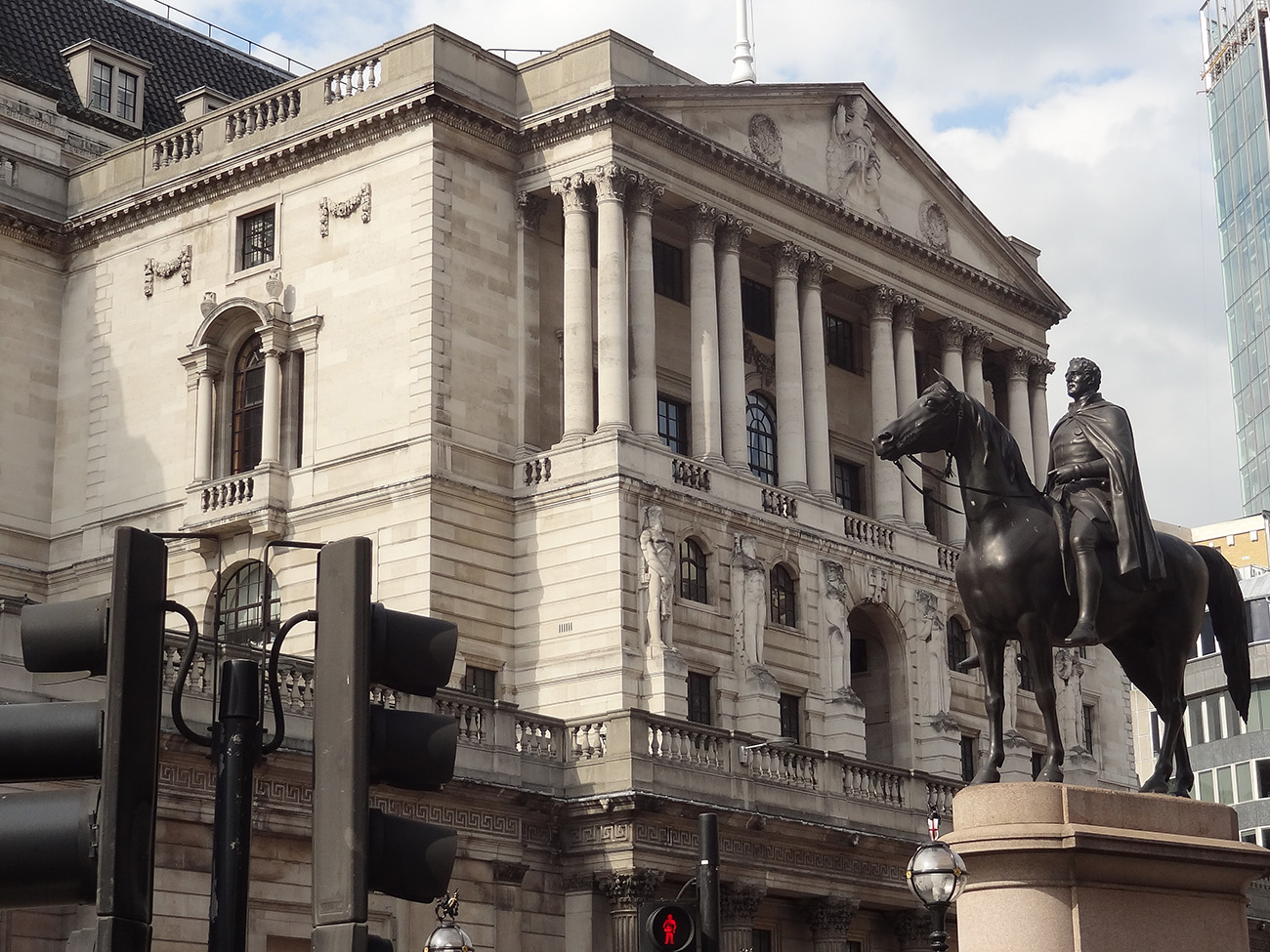 The UK government announced on 14 October 2024 in a ministerial statement that it intended to raise the threshold for the ring-fencing (separation) of retail and investment banking activities of large UK-based banks. These banks are known as ‘systemically important financial institutions (SIFIs)’, which are currently defined as those with more than £25bn of core retail deposits. Under the new regulations, the threshold would rise from £25bn to £35bn.
The UK government announced on 14 October 2024 in a ministerial statement that it intended to raise the threshold for the ring-fencing (separation) of retail and investment banking activities of large UK-based banks. These banks are known as ‘systemically important financial institutions (SIFIs)’, which are currently defined as those with more than £25bn of core retail deposits. Under the new regulations, the threshold would rise from £25bn to £35bn.
Ring-fencing is the separation of one set of banking services from another. This separation can be geographical or functional. The UK adopted the latter approach, where ring-fencing is the separation of core retail banking services, such as taking deposits, making payments and granting loans to small and medium-sized enterprises (SMEs) from investment banking and international operations. The intention of ring-fencing was to prevent contagion – to protect essential retail banking services from the risks involved in investment banking activities.
Reducing regulation to increase competition
Raising the limit is intended to facilitate greater competition in the retail banking sector. In recent years, US banks, such as JP Morgan and Goldman Sachs, have been expanding their depositor base in the UK under their respective brands – Chase UK and Marcus.
These relatively small UK subsidiaries were not ring-fenced from their wider investment banking operations as their retail deposits were under (but not far under) the £25bn limit. However, this restricted their ability to increase market share further without bearing the additional regulatory burden associated with ring-fencing that much larger incumbents face. Raising the threshold would allow them to expand to the higher limit without the regulatory burden.
The proposals are part of a broader package of reforms aimed at reducing the regulatory burden on UK-based banks. The hope is that this will stimulate greater lending to SMEs to boost investment and productivity.
The proposals also include a new ‘secondary’ threshold. This will exempt banks providing primarily retail banking services from the rules governing the provision of investment banking accounts. This exemption will apply as long as their investment banking is less than 10% of their tier 1 capital. (Tier 1 capital is currently the buffer which banks are required to retain in case of a crisis.) The changes were the outcome of a review conducted in 2022 but had not been implemented by the previous government.
The announcement has sparked a debate about ring-fencing, with some commentators calling for it to be removed altogether. Therefore, it is timely to revisit the rationale for ring-fencing. This blog examines what ring-fencing is and why it was introduced, and explains the associated economic costs and benefits.
Why was ring-fencing introduced?
 Ring-fencing was recommended by the Independent Commission on Banking (ICB) in 2011 (see link below) and implemented through the Financial Services (Banking Reform) Act of 2013. The proposed separation of core retail banking services from investment banking were intended to address issues in banks which arose during the global financial crisis and which required substantial taxpayer bailouts. (See the 2011 blog, Taking the gambling out of high street banking (update).)
Ring-fencing was recommended by the Independent Commission on Banking (ICB) in 2011 (see link below) and implemented through the Financial Services (Banking Reform) Act of 2013. The proposed separation of core retail banking services from investment banking were intended to address issues in banks which arose during the global financial crisis and which required substantial taxpayer bailouts. (See the 2011 blog, Taking the gambling out of high street banking (update).)
Following deregulation and liberalisation of financial services in the 1980s, many UK banks had extended their operations so that they combined domestic retail operations with substantial investment and international operations. The intention was to open up all dimensions of financial services to greater competition and allow banks to exploit economies of scope between retail and investment banking.
However, the risks associated with these services are very different but, in the period before the financial crisis, were provided alongside one another within banking groups.
One significant risk which was not fully recognised at the time was contagion – problems in one dimension of a bank’s activity could severely compromise its ability to provide services in other areas. This is what happened during the financial crisis. Many of the UK banks’ investment operations had made significant investments in off-balance sheet securitised debt instruments – CDOs being the most famous example. (See the 2018 blog, Lehman Brothers: have we learned the lessons 10 years on?.)
 When that market crashed in 2007, several UK-based banks incurred significant losses, as did other banks around the world. Given their thin equity buffers and the inability to borrow due to a credit crunch, such banks found it impossible to bear these losses.
When that market crashed in 2007, several UK-based banks incurred significant losses, as did other banks around the world. Given their thin equity buffers and the inability to borrow due to a credit crunch, such banks found it impossible to bear these losses.
The UK government had to step in to save these institutions from failing. If it had not, there would have been significant economic and social costs associated with their inability to provide core retail banking functions. (See the 2017 blog, Ten years on.)
The Independent Commission proposed that ‘the risks inevitably associated with banking have to sit somewhere, and it should not be with taxpayers. Nor do ordinary depositors have the incentive (given deposit insurance to guard against runs) or the practical ability to monitor or bear those risks’ (p.9). Unstructured banks, with no separation of retail from investment activities, increase the potential for both of these stakeholder groups to bear the risks of investment banking.
Structural separation of retail and investment banking addresses this problem. First, separation should make it easier and less costly to resolve problems for banks that get into trouble, avoiding the need for taxpayer bailouts. Second, structural separation should help to insulate retail banking from external financial shocks, ensuring that customer deposits and essential banking services are protected.
Problems of ring-fencing
Ring-fencing has been subject to criticism, however, which has led to calls for it to be scrapped.
 It must be noted that most of the criticism comes from banks themselves. They state that it required significant operational restructuring by UK banks subject to the regulatory framework which was complex and costly.
It must be noted that most of the criticism comes from banks themselves. They state that it required significant operational restructuring by UK banks subject to the regulatory framework which was complex and costly.
In addition, segregating activities can lead to inefficiencies, as banks may not be able to take full advantage of economies of scope between investment and retail banking. Furthermore, ring-fencing could lead to a misallocation of capital, where resources are trapped in one part of the bank and cannot be used to invest in other areas, potentially increasing the risks of the specific areas.
Assessing the new proposals
It is argued that the increased threshold proposed by the authorities may put UK institutions at a competitive disadvantage to outside entrants that are building market share from a low base. Smaller entrants do not have to engage in the costly restructuring that the larger UK incumbents have. They can exploit scope economies and capital mobility within their international businesses to cross-subsidise their retail services in the UK which incumbents with larger deposit-bases are not able to.
However, the UK market for retail banking has significant barriers to entry. Following the acquisition of Virgin Money by Nationwide, only six banking groups in the UK meet the current threshold (Barclays, HSBC, Lloyds Banking Group, NatWest Group, Santander UK and TSB). Indeed, all of those have deposits well above the proposed £35bn threshold. Consequently, raising the threshold should not add significant compliance and efficiency costs, while the potential benefits of greater competition for depositors and SMEs could be a substantial boost to investment and productivity. Furthermore, if the new US entrants do suffer problems, it will not be UK taxpayers who will be liable.
Have we been here before?
In many ways, ring-fencing is a throwback to a previous age of regulation.
 One of the most famous Acts of Congress relating to finance and financial markets in the USA is the Glass-Steagall Act of 1933. The Act was passed in the aftermath of the 1929 Wall Street crash and the onset of the Great Depression in the USA. That witnessed significant bank failures across the country and problems were traced back to significant losses made by banks in their lending to investors during the speculative frenzy that preceded the stock market crash of 1929.
One of the most famous Acts of Congress relating to finance and financial markets in the USA is the Glass-Steagall Act of 1933. The Act was passed in the aftermath of the 1929 Wall Street crash and the onset of the Great Depression in the USA. That witnessed significant bank failures across the country and problems were traced back to significant losses made by banks in their lending to investors during the speculative frenzy that preceded the stock market crash of 1929.
To prevent a repeat of the contagion and ensure financial stability, Glass-Steagall legislated to separate retail banks and investment banks.
In the UK, such separation had long existed due to the historical restrictions placed on investment banks operating in the City of London. In the late 20th century, the arguments for separation became outweighed by arguments for the liberalisation of markets to improve efficiency and competition in financial services. Banking was increasingly deregulated and separation disappeared as retail banks increasingly engaged in investment activities.
That cycle of deregulation reached its nadir in 2007 with the international financial crisis. The need to bail out banks made it clear that the supposed synergies between investment and retail banking were no compensation for the high costs of contagion in the financial system.
Regulators must be wary of calls for the removal of ring-fencing. Sir John Vickers (chairman of the independent commission on banking) highlighted the need to protect depositors, and more importantly taxpayers, from risks in banking. It is the banks that should bear the risks and manage them accordingly. Ultimately, it is up to the banks to do that better.
Articles
- UK to raise bank ringfencing threshold to ‘improve competitiveness’
- UK to ease bank ring-fencing rules soon, says minister
- Government to raise bank ring-fencing threshold to £35bn in boon for Chase and Marcus
Financial Times, Michael O’Dwyer and Akila Quinio (15/10/24)
Reuters, Sachin Ravikumar and Iain Withers (14/10/24)
This is Money, Helen Kirrane (15/10/24)
Bank annual reports
Access these annual reports to check the deposit base of these UK banks:
- Annual Reports
- Annual Report
- Helping Britain Prosper: annual report and accounts 2023
- 2023 Annual Report and Accounts: Serving our customers every day
- Results, reports and presentations
Barclays
HSBC
Lloyds Banking Group
NatWest Group
TSB Bank
Information
- Ring-fencing
- Ring-fencing: what is it and how will it affect banks and their customers? (PDF)
- Glass-Steagall Act of 1933: Definition, Effects, and Repeal
Bank of England: Prudential Regulation
Bank of England Quarterly Bulletin, Katie Britton, Lindsey Dawkes, Simon Debbage and Talib Idris (2016 Q4)
Investopedia, Reem Heakal (25/1/24)
Report
- Final Report: Recommendations
The Independent Commission on Banking, Sir John Vickers (Chair), Clare Spottiswoode, Martin Taylor, Bill Winters and Martin Wolf (September 2011)
Questions
- How did the structure of UK banks cause contagion risk in the period before the global financial crisis?
- How does ring-fencing aim to address this and protect depositors and taxpayers?
- Use the links to the annual reports of the covered banks to assess the extent of deposits held by the institutions in 2023. How far above the proposed buffer do the banks sit?
- Use your answer to 3) and economic concepts to analyse the impact on competition in the UK market for retail deposits of raising the threshold.
- What are the risks for financial stability of raising the threshold?